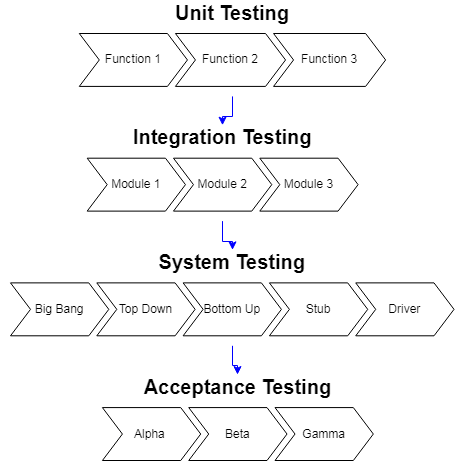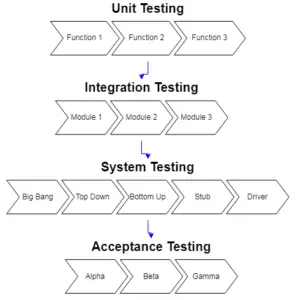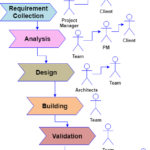Are you curious about the different levels of Software Testing? Let’s dive into the world of testing and explore the four levels of software testing that are essential for a successful software development lifecycle.
Levels of Testing
First up, we have Unit Testing – the foundation of software testing. It focuses on testing individual units or components of the software to ensure that they are functioning as expected.
Next is Integration Testing, where the individual components or units go through testing to ensure they work in harmony. This level of testing is crucial as it helps to identify issues that may arise due to interactions between different components.
Then comes System Testing – where the complete system or software has to pass as a whole to ensure it meets the specified requirements. This level of testing is essential as it helps to uncover defects that may arise from the integration of the different components.
Finally, Acceptance Testing is the last stage of software testing. This level of testing is for the end users to verify if the software meets their needs and requirements.
So, if you want to ensure that your software development process is successful, understanding these four levels of Software Testing is essential.
Now, dive in to understand more about the levels of testing.
1. Unit Testing:
Unit Testing is the first level of validation that developers have to perform. It ensures that the smallest unit of code is working correctly. A Unit could be a function, a file, or a program. Hence, we can also call it module or component-level testing.
2. Integration Testing:
Integration Testing facilitates testing the connection or data exchange happening between a different set of modules. You may also call it I&T Testing or String Testing approach.
It cuts down into multiple approaches such as the Top-Down, Bottom-Up, and Sandwich Approach (A mixture of Top-Down and Bottom-Up). This process is aided by using model programs known as Stubs and Drivers. These two modules don’t simulate the whole programming logic of the system but validate the data transfer using the calling module.
Big Bang Integration:
In Big Bang Testing, the integration can’t get validated until all the modules are available. Once they are ready, it will check if they are performing well. This testing type has some drawbacks such as the bugs can appear at a later stage. Also, it is hard to locate where the defect originated from, whether was it in the interface or inside the module code.
Top-Down Integration:
In Top-Down Testing, the integration of all high-level modules happens first and enters into testing at an early stage. In this type of testing, Stubs act as the dummy modules if their original counterpart is not yet ready for integration purposes.
Bottom-Up Integration Testing:
In Bottom-Up Integration, the integration of all low-level modules happens first and enters into the testing stage. Here, just like Stubs, drivers act as dummy modules for integration purposes.
Stub:
It is a test program that gets called by the Module under Test.
Driver:
It is also a test program that starts up the Module under Test.
4. System Testing (or End-To-End Testing):
It stays at the bottom of the testing pyramid and falls under the category of black-box testing
Since here the full validation of the integrated application occurs, we may also call it End-to-End flow testing.
It confirms that the product is running as expected on all the supported platforms. The tests with different input data get executed to check the application is returning the expected outputs. It also assesses the user experience during the testing.
5. Acceptance Testing:
It intends to help in winning customer approvals so that they can receive the product and release the payments.
Acceptance Testing has the following subtypes Alpha, Beta & Gamma Testing.
Alpha Testing:
Alpha testing resembles usability testing which is executed by the developers who created the product. In some cases, the customers require it to be performed in their environments by the external evaluator in the presence of core developers/QA.
Beta Testing:
A limited number of end users carry out the beta testing before delivery. If they raise the need for some changes, the defect gets created and assigned to developers for resolution.
Gamma Testing:
Gamma testing verifies the software for the readiness of the release. It occurs at the end of the software development lifecycle.
No matter what level of expertise you have, we’ve got you covered with our extensive collection of tutorials. Come and explore our tutorials and take your skills to the next level!
- 100+ Manual Testing Interview Questions
- Static Testing And Dynamic Testing – Understand the Difference
- Software Testing – A Step-by-Step Guide
- Build A Selenium Python Test Suite From Scratch Using Unittest
- Entry-Level Java Developer Quiz
Thanks for trusting Techbeamers.










